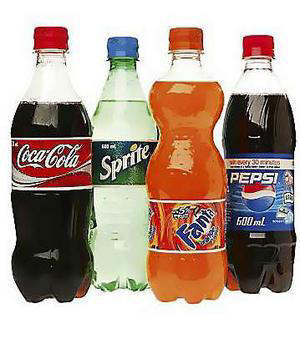
Saturday, December 6, 2008
Grog

Eggnog
 addition of various liquors, such as brandy, rum, whiskey and sake.
addition of various liquors, such as brandy, rum, whiskey and sake.Eggnog is a popular drink throughout the Americas, and is usually associated with winter celebrations such as Christmas and New Year. Eggnog has long been believed to be an excellent source of magnesium. Eggnog is also very popular in Central Europe, but only its cognac version, that can be bought almost everywhere, mostly in Christmas-markets, during November and December. Commercially, non-alcoholic eggnog is available around Christmas time and during the winter.
Cordial (or) Squash

Squash or cordial is a highly-sweetened (and often fruit-based) concentrate, which is mixed with a liquid, most commonly water, before drinking. It is also the name of the resulting drink.
Squashes and cordials are common in the United Kingdom, Ireland, Scandinavia, South Africa, Kenya, Australia and New Zealand, and have a large market share in competition with fruit juices and soft drinks.
Typically, squash is created by mixing one part concentrate with four or five parts water (depending on concentration and personal taste) directly into a glass or mug or into a jug. The most common flavours are orange, apple and blackcurrant, lemon, peppermint, mixed fruit, summer fruits, and lemon-lime. Other flavours include peach, strawberry, and kiwi fruit.
Tea

Tea refers to the agricultural product of the leaves, leaf buds, and internodes of Camellia sinensis, prepared and cured by various methods. "Tea" also refers to the aromatic beverage prepared from such cured leaves by combination with hot or boiling water and the colloquial name for the Camellia sinensis plant itself.
Tea is the most widely-consumed beverage after water. It has a cooling, slightly bitter, astringent flavour.
The five types of tea most commonly found on the market are black tea, oolong tea, green tea, white tea, and pu-erh tea.
The term "herbal tea" usually refers to an infusion or tisane of fruit or herbs that contains no Camellia sinensis. The term "red tea" refers to an infusion made from the rooibos plant, also containing no Camellia sinensis.
Coffee

Coffee is a widely-consumed stimulant beverage prepared from roasted seeds, commonly called coffee beans, of the coffee plant. Coffee was first consumed in the 9th century, when it was discovered in the highlands of Ethiopia. From there, it spread to Egypt and Yemen, and by the 15th century had reached Azerbaijan, Persia, Turkey, and northern Africa. From the Muslim world, coffee spread to Italy, then to the rest of Europe, Indonesia and the Americas.Today, coffee is one of the most popular beverages worldwide.
Coffee berries, which contain the coffee bean, are produced by several species of small evergreen bush of the genus Coffea. The two most commonly grown species are Coffea canephora (also known as Coffea  robusta) and Coffea arabica. These are cultivated in Latin America, Southeast Asia, and Africa. Once ripe, coffee berries are picked, processed, and dried. The seeds are then roasted, undergoing several physical and chemical changes. They are roasted to varying degrees, depending on the desired flavor. They are then ground and brewed to create coffee. Coffee can be prepared and presented in a variety of ways.
robusta) and Coffea arabica. These are cultivated in Latin America, Southeast Asia, and Africa. Once ripe, coffee berries are picked, processed, and dried. The seeds are then roasted, undergoing several physical and chemical changes. They are roasted to varying degrees, depending on the desired flavor. They are then ground and brewed to create coffee. Coffee can be prepared and presented in a variety of ways.
Coffee has played an important role in many societies throughout modern history. In Africa and Yemen, it was used in religious ceremonies. As a result, the Ethiopian Church banned its consumption until the reign of Emperor Menelik II of Ethiopia. It was banned in Ottoman Turkey in the 17th century for political reasons, and was associated with rebellious political activities in Europe.
Coffee is an important export commodity. In 2004, coffee was the top agricultural export for 12 countries, and in 2005, it was the world's seventh largest legal agricultural export by value.
Some controversy is associated with coffee cultivation and its impact on the environment. Many studies have examined the relationship between coffee consumption and certain medical conditions; whether the effects of coffee are positive or negative is still disputed.
Cocoa

Cocoa is the dried and fully fermented fatty seed of the cacao tree from which chocolate is made. "Cocoa" can often also refer to the drink commonly known as hot chocolate; cocoa powder, the dry powder made by grinding cocoa seeds and removing the cocoa butter from the dark, bitter cocoa solids; or it may refer to the combination of both cocoa powder and cocoa butter together.
A cacao pod has a rough leathery rind about 3 cm thick (this varies with the origin and variety of pod). It is filled with sweet, mucilaginous pulp called 'baba de cacao' in South America, enclosing 30 to 50 large almond-like seeds (beans) that are fairly soft and pinkish or purplish in color.
Cocoa should not be confused with the coca plant which can be used to create cocaine.
Cocktail

Cocktails are made with gin, whiskey, rum, tequila, brandy, or vodka. Many cocktails traditionally made with gin, such as the gimlet, or the martini, or Tom Collins are now commonly made with vodka


